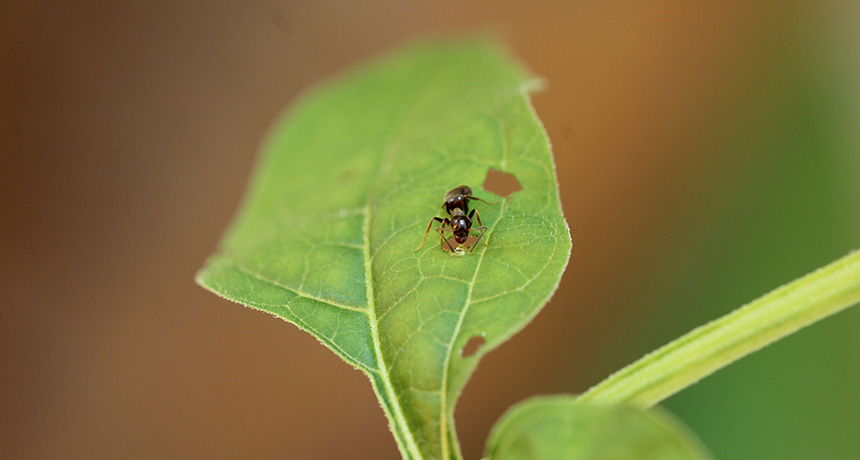Nightshade plants bleed sugar as a call to ants for backup

Tests suggest that nightshade goo contains lots of sugar and some amino acids that may help attract protective ants like Lasius niger (shown). Researchers suspect that a common hormone called jasmonic acid induces its production.
Tobias Lortzing







